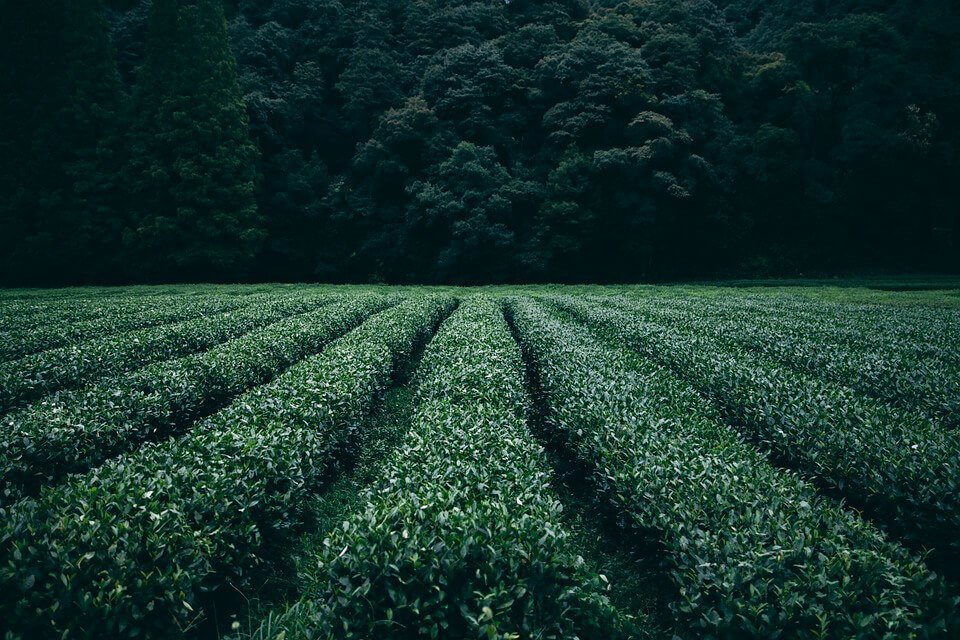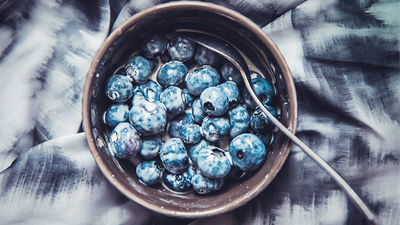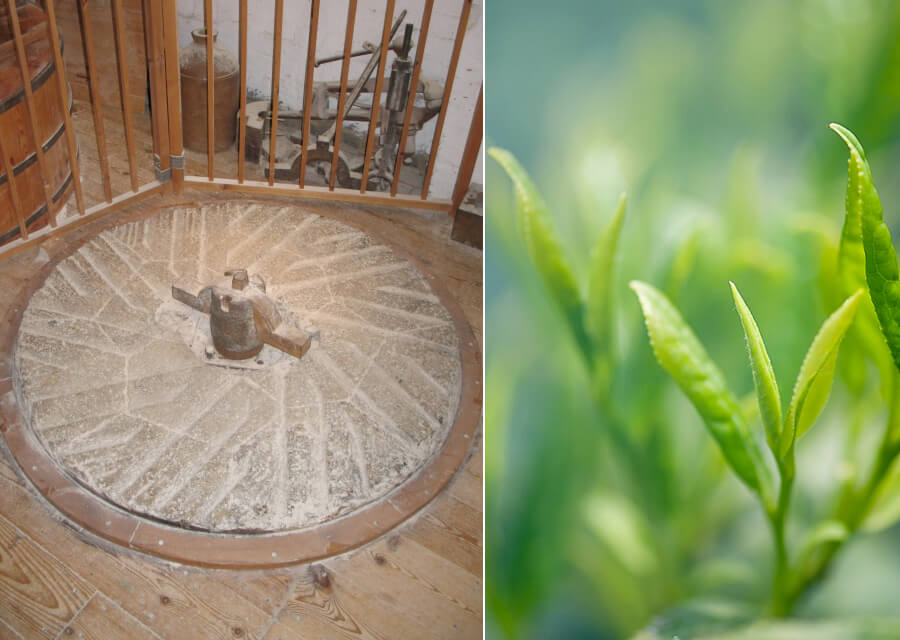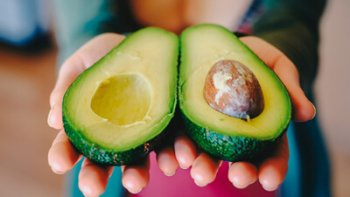What is a Matcha Tea?
Matcha is a popular ground tencha leaves that we now use in the food and beverage industry. Tencha leaves are from the camellia sinensis plant grounded into powder as green tea. It has been existing and well-known for centuries. And because of its increasing popularity until today, many people have discovered new ways on how to make a matcha tea.
Some people consumed it to increase mindfulness and de-stress. Others depended on it to be more energetic, enhance their concentration and overall wellness. Matcha is the word to refer to the higher level of green tea. It is a premium grade green tea with more nutrients because of its method of processing.
History of Matcha
Drinking tea originated in China, where Zen monks consume it to enhance concentration and revitalize their energy. Buddhist monks Kukai and Saicho brought it to Japan during the 8th and 9th century but the tea making process back then was different. Tea leaves were initially extracted using cubical bricks instead of grinding.
The powdered form of matcha started in the next hundreds of years when Zen monk Eisai brought it to Japan from his study trip to China.
Eventually, he recommended the tea cultivation and consumption to one of his students. His recommendation was taken seriously and soon the cultivation of tea plants started near Kyoto. Soon, they discovered that the quality of the soil contributed to the cultivation of the plants. That was when drinking matcha became widespread in Japan.

Uji Matcha – Matcha Green Tea Plantation
It was the 14th century when tea plantations expanded because of the growing demand from tea drinkers. Plantations flourished in Uji, Kyoto during the reign of the third Shogun of the Ashikaga Shogunate. However, the initial tea products in Uji had lower quality compared with the place where they were first planted.
Tea farmers discovered that the dense forest surrounding the initial plantation provided shade. They soon realized that shading was an essential factor in producing the highest quality matcha.
Their discovery led them to develop a method that allowed them to keep planting in their farms, as moving is no longer necessary. Tea farmers began building wooden frames and woven straw over the tea gardens that shades the plants similar to the original plantation. This method allowed them to adjust the amount of sunlight that the tea bushes received.
Eventually, Uji, Kyoto became the most suitable place to grow tea plants. In succession, they released a decree stating that Uji was the only area where the shading method of tea gardens was allowed. Until today there are only two recognized places in Japan where the best matcha are cultivated and produced: Uji in Kyoto, Nishio in Aiya.

Superfood Trends That Will Keep You Fit for Life
To help you stay healthy for years to come, we give you a short list of superfood trends and benefits that are making their mark on 2018.
Forms of Matcha
Matcha has only one original form, and that is the powder. However, it has different grades or levels that can be seen through the quality of its appearance and processing method. They categorize these grades into ceremonial grade, premium grade, and culinary grade.
The ceremonial grade is the highest quality with extremely refined, vibrant green powder and does not taste bitter at all. This has been used in Japanese tea ceremonials for centuries.

Matcha green tea powder / photo: Photo by Alice Pasqual on Unsplash
The premium grade is also used in Japanese ceremonial teas but with slightly lower quality and more economical.
The lower grades of matcha have a grainy texture because matured leaves were used to produce them. The culinary grade is used for food and beverages with a darker green color.
Drinking matcha means you are consuming the entire tencha leaves because they are highly pulverized. It is not like drinking a thin liquid from a tea bag or when boiling tea leaves where the rest end up in the trash.
Process of Manufacturing Matcha Tea
The process of making ceremonial grade matcha is slightly different from the processing method of regular green tea. It goes through less processing and a cup of brewed matcha contains higher amounts of nutrients compared with one serving of green tea.
One cup of matcha has ten times more vitamin C than a cup of green tea.
The best tencha leaves are selected from a plantation with the right amount of sunlight between 21-30 days before harvest.
The plantation area is shaded with a framework of rice straw or reed screens to control the amount of sunlight. This method allows the tea leaves to expand naturally to collect more sunlight, making them very soft. The leaves produce more chlorophyll, giving them a vibrant green color. By doing this, they keep their amino acids that give them a sweet taste and aroma.

Matcha Green Tea Manufacturing
The standard tea trees usually grow their roots up to 2 meters long. However, organic tea tree grows its roots up to 8 meters to allow adequate oxygen intake. This process is essential for the proper amount of nutrients and water intake that produce the highest grade matcha.
- The first flush or the 1st harvest of tencha leaves are used to produce the organic ceremonial grade matcha.
- The second flush of leaves or the next harvest are used for more economical ceremonial grades. The best quality first flush leaves are characterized by their sweet taste and rich, dark color.
After a careful selection of tea leaves, they are immediately steamed to stop their fermentation. This is done on the same day of harvest at a specific low temperature. Next is the cooling process. Instead of rolling and twisting just like making a regular green tea, they gently blow the ceremonial grade tea leaves in the cooling machine using a mild flow of air. Afterwards they dry them within 20 to 40 minutes in a controlled temperature.
Once dry, they remove the stems and vines, then grind the processed tencha leaves using a traditional stone mill.
The premium first flush of tencha leaves is only grinded by a stone mill, while the ingredient grades go through a jet mill machine for grinding.
The lower grade matcha does not have a sweet aroma because the jet mill machine runs at a high speed that produces a higher temperature when it grinds. This temperature reduces the quality of the tencha leaves, resulting in a lower grade matcha.
On the other hand, the traditional stone has a cooler temperature and feels cold when you touch it. The characteristics of the stone mill such as the type of stone, the pattern engraved on it for grinding, its weight, and the number of spins all affect the quality of the matcha.
One traditional stone mill only produces around 50 grams of matcha per hour. After the careful process, a 9th degree tea master tests the quality of the matcha. There are only ten 9th degree tea masters who are trained to identify the kind of tea by smelling and tasting.

Surprising Health Benefits of Coffee
The good news is that coffee may actually hold some surprising health benefits. There have been a number of studies carried out recently to show that, in fact, we might be able to benefit from drinking more!
10 Benefits of Matcha
- Matcha tea provides constant energy level and agility that lasts for almost 36 hours. It has 35 grams of caffeine as a mild stimulant that is less than half of the caffeine in a cup of brewed coffee. Additionally, its caffeine and amino acid work harmoniously to provide sustained energy without palpitations.
- It helps burn calories and improve metabolism. Matcha almost has zero calories and contains Epigallocatechin, a specific catechin that boosts metabolism. This catechin burns calories faster than the normal rate that helps in weight control. Research found that matcha contains ten times more Epigallocatechin than other teas. Matcha also lowers bad cholesterol when combined with a proper diet. The polysaccharide in matcha also prevents high blood sugar while maintaining insulin levels.
- Matcha reduces stress and keeps you alert. It contains a high amount of amino acid called L-theanine. L-theanine is known to enhance mental wellness and cognitive abilities. Matcha has five times more L-theanine compared with regular green tea. This amino acid also seems to have an effect on our mood. It has a calming effect because L-theanine increases alpha wave activity in the brain. Furthermore, the combination of L-theanine and caffeine helps improve concentration.
- Matcha makes your immune system stronger and reduces inflammation. Matcha is rich in antioxidants that keeps the cells of the body protected from free radicals. This reduces body inflammation and the high chlorophyll content in matcha detoxify the body that leads to good health. It also helps regulate sleep disorders and reduces hair loss.
- Matcha prevents bad breath. Halitosis or bad breath is caused by volatile sulfur compounds (VCS) that are produced by the oral microorganisms in the gums. A research showed that green tea is the most effective in reducing the concentration of VCS. It also served as a strong deodorant and disinfectant in the mouth that removed bad breath.
- Improves your skin. We already mentioned that matcha is rich in antioxidants and contains catechins and amino acids. The effect of these nutrients is shown in our skin. The catechins deactivate free radicals, resulting in a healthier complexion. Its anti-inflammatory properties prevent acne and reduce redness associated with other skin conditions. Moreover, the tannins in matcha treat oily skin by reducing the production of oil that causes pimples and acne.
- Enhances your cardiovascular health. Matcha’s ability to lower bad cholesterol and burn calories prevents fat accumulation and cholesterol buildup. Clogged veins and arteries are because of cholesterol build up may lead to stroke or heart attack. Regular intake of matcha flush out bad cholesterol from the arteries that prevents this condition. Low cholesterol levels aid in maintaining healthy blood pressure and all these effects contribute to a healthy heart.
- It prevents neurodegenerative diseases. Polyphenols in matcha functions as therapeutic agents that alter the brain aging process. Studies consider polyphenols found in green teas as potential neuroprotective agents. It means that drinking matcha regularly can protect the brain from conditions such as Alzheimer’s and Parkinson’s diseases.
- Protection from arthritis. Because of the anti-inflammatory properties of polyphenols found in matcha, it prevents inflamed joints that cause arthritis. Polyphenols are compounds in plants that preserve cartilage and bones preventing arthritis.
- Matcha is fully packed with vitamins and minerals. It has vitamin A that aids in better eyesight and removes free radicals with its strong antioxidant properties. Tea leaves are rich in vitamin B carotene that converts into vitamin A when the body absorbs it. This improves our vision and stops cell degeneration. Find more matcha benefits here.
Other Vitamins and Nutrients Found in Matcha

Drinking matcha benefits / photo: Photo by Matcha and CO on Unsplash
Thiamine (Vitamin B1)
Thiamine is responsible for the metabolism of amino acid, sugar and lipids. It is important to gain this from natural food and drinks because our body does not produce it.
Riboflavin (Vitamin B2)
Vitamin B12 or Riboflavin aids in forming red blood cells and produces antibodies to fight diseases. It helps cells, nails, hair and skin in effectively using oxygen for a healthy body.
Niacin (Vitamin B3)
Niacin prevents the hardening of the arteries and minimizes the chances of stroke and heart attack. It is essential in releasing energy because it breaks down fats, proteins and carbohydrates. Research also shows that niacin increases the production of good cholesterol while decreasing triglycerides that helps in maintaining a healthy heart.
Fluorine
Matcha is high in fluorine as this nutrient is naturally found in the genus of camellia plants. Fluorine is important in keeping oral health. It serves as an antioxidant that protects the gums and keeps the teeth strong.
Cancer Defense
Studies show that the polyphenols and antioxidants in matcha are capable of protecting the body cells from cancer. There are proven presentations that matcha suppressed the metabolism of oxidative mitochondrial and glycolic flux. These metabolic processes are responsible for the activation of cancer cells. It means that regular intake of matcha prevents the development of cancer because it deactivates cancer cells.
Reduces Anxiety
A university in Japan revealed through a behavioral pharmacological analysis that matcha and its extracts reduce anxiety. Serotonin is found in the brain and the imbalance level of it influences our mood that may cause depression and anxiety. Dopamine is a neurotransmitter that is activated when a good thing happened. Matcha activates dopamine and serotonin receptors that contributes to a positive behavior and happiness.












